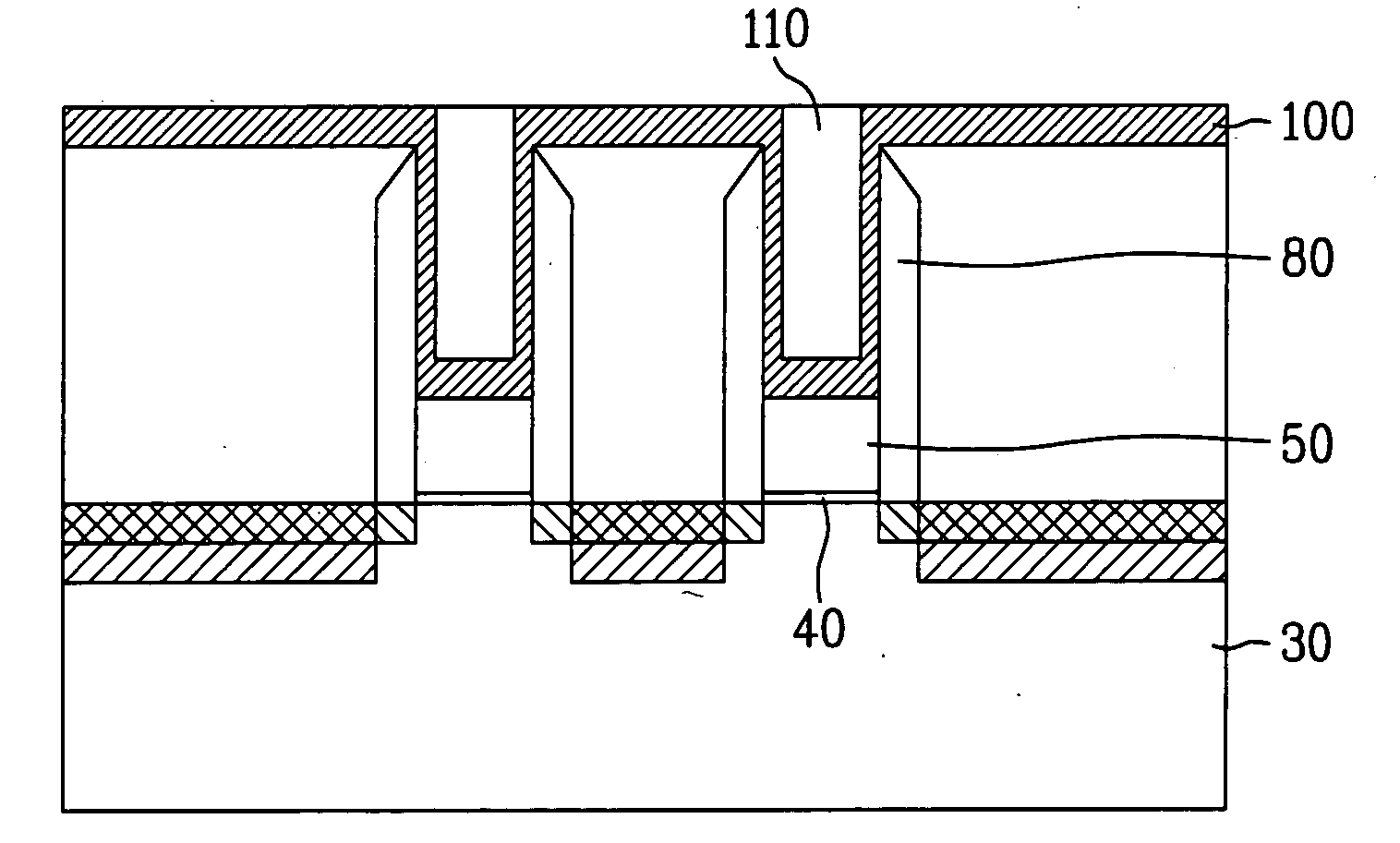Method of fabricating a flash memory device
a flash memory device and flash memory technology, applied in the direction of semiconductor devices, basic electric elements, electrical equipment, etc., can solve the problems of rom devices exhibit much higher input/output speeds but are volatile memory devices, and deteriorating the memory function of the flash memory device, so as to prevent over-etching and recessing phenomena, improve process margin, and improve isolation
- Summary
- Abstract
- Description
- Claims
- Application Information
AI Technical Summary
Benefits of technology
Problems solved by technology
Method used
Image
Examples
Embodiment Construction
[0026] Reference will now be made in detail to exemplary embodiments of the present invention, examples of which are illustrated in the accompanying drawings. Wherever possible, like reference designations will be used throughout the drawings to refer to the same or similar parts.
[0027] Referring to FIG. 3A, a tunnel oxide layer 40 and a floating gate 50 are sequentially formed on a semiconductor substrate 30. A silicon nitride layer 60 for dummy pattern formation is deposited on the floating gate 50.
[0028] Referring to FIG. 3B, the silicon nitride layer 60 is exposed and etched to form the dummy pattern 60a by photolithography. The silicon nitride layer 60 selectively is etched using a CHxFy gas, for example, CH3F or CH2F2.
[0029] Referring to FIG. 3C, the floating gate 50 is etched using the dummy pattern 60a as a hard mask.
[0030] Referring to FIG. 3D, a source region 70 and a drain region 71 are formed by ion implantation. The source / drain regions 70 and 71 are formed in an ex...
PUM
 Login to View More
Login to View More Abstract
Description
Claims
Application Information
 Login to View More
Login to View More - R&D
- Intellectual Property
- Life Sciences
- Materials
- Tech Scout
- Unparalleled Data Quality
- Higher Quality Content
- 60% Fewer Hallucinations
Browse by: Latest US Patents, China's latest patents, Technical Efficacy Thesaurus, Application Domain, Technology Topic, Popular Technical Reports.
© 2025 PatSnap. All rights reserved.Legal|Privacy policy|Modern Slavery Act Transparency Statement|Sitemap|About US| Contact US: help@patsnap.com



